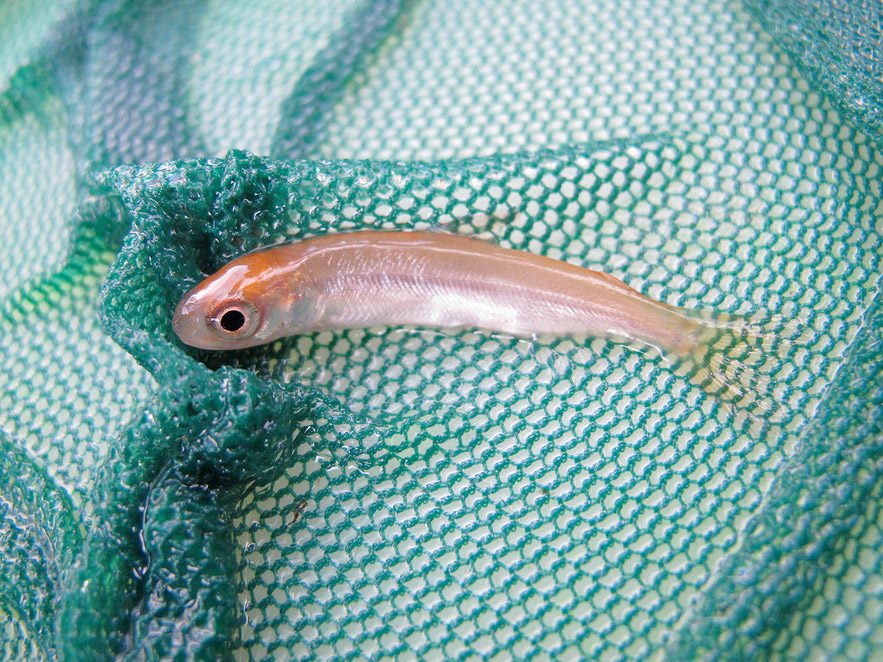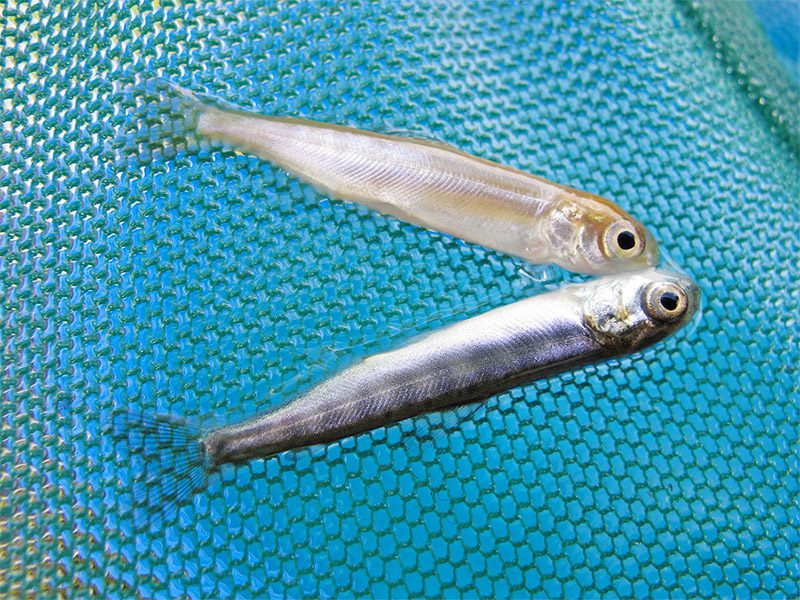Friday March 1, 2013

Over the years we have handled millions of juvenile salmon, but this week we came across one that truly stands out from the rest. During the spring each year we use rotary screw traps to sample juvenile Chinook migrating out of Central Valley watersheds (see Efficiently incarcerating adolescent fish). As we do each morning, our fisheries technicians recently checked our traps to see what we captured overnight. As they scooped hundreds of salmon fry out of the trap livewell, one immediately stood out among the others. We captured what appeared to an albino salmon fry. With a little research we found that it is not actually a true albino—since the eyes have normal color, it is referred to as leucistic. Leucism is caused by a recessive genetic trait that results in a reduction of skin pigments. Albinism and leucism are not uncommon in hatchery settings but are quite rare in wild fish like this one. The low frequency of this abnormality in natural populations may reflect that the lack of protective coloration increases vulnerability to predation.

